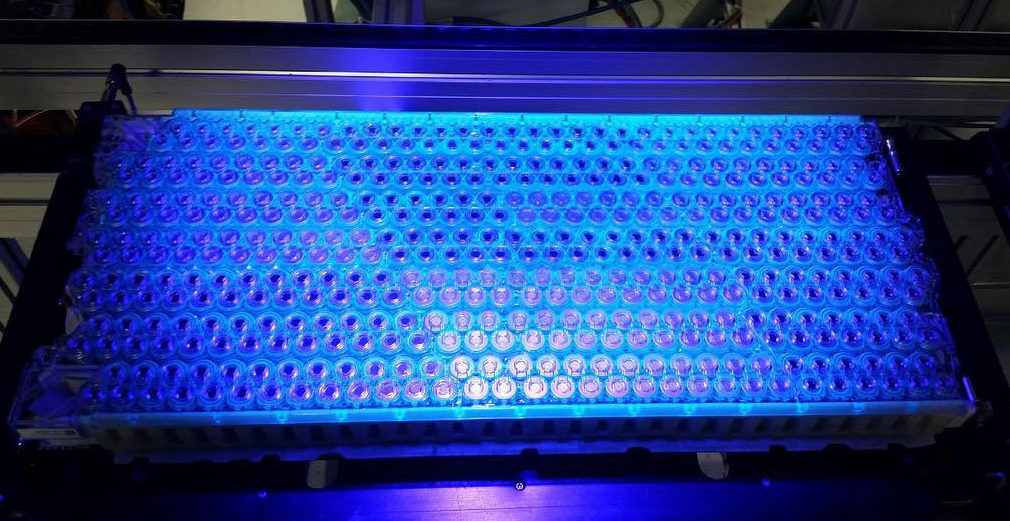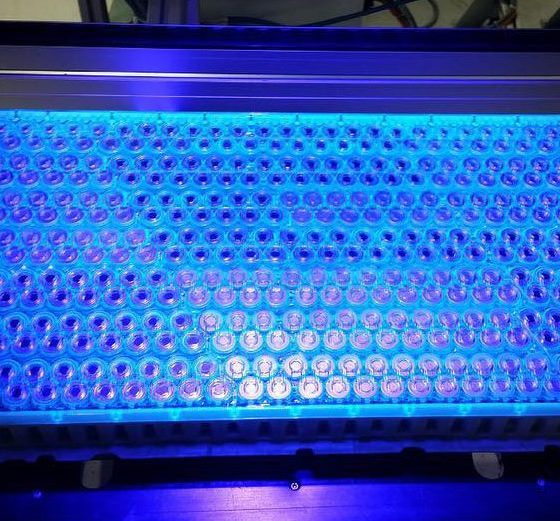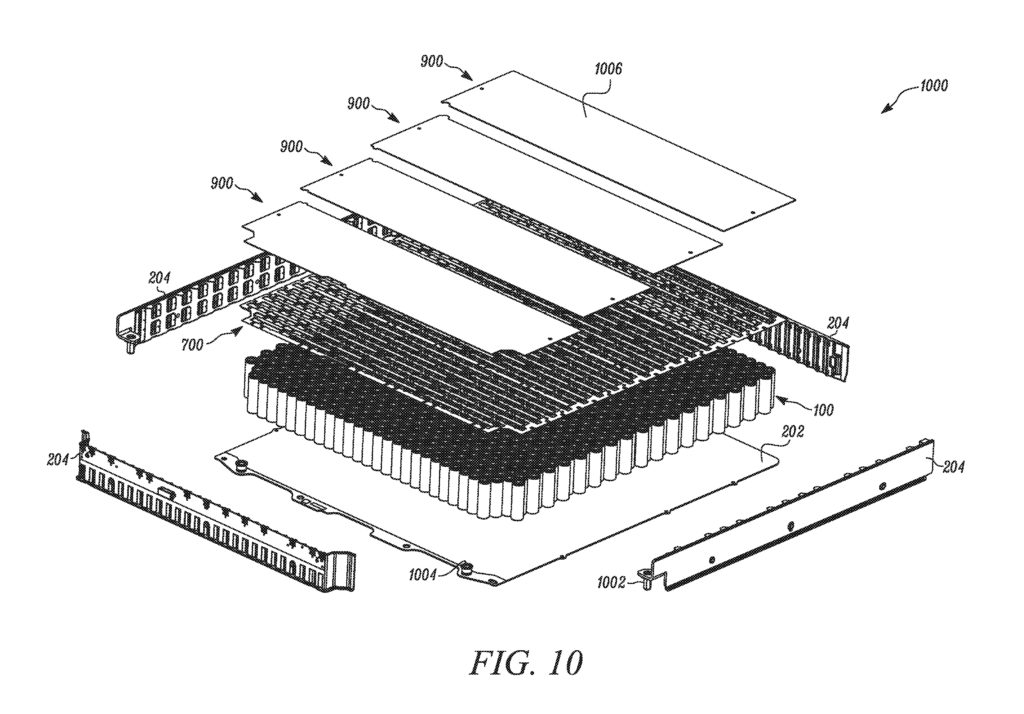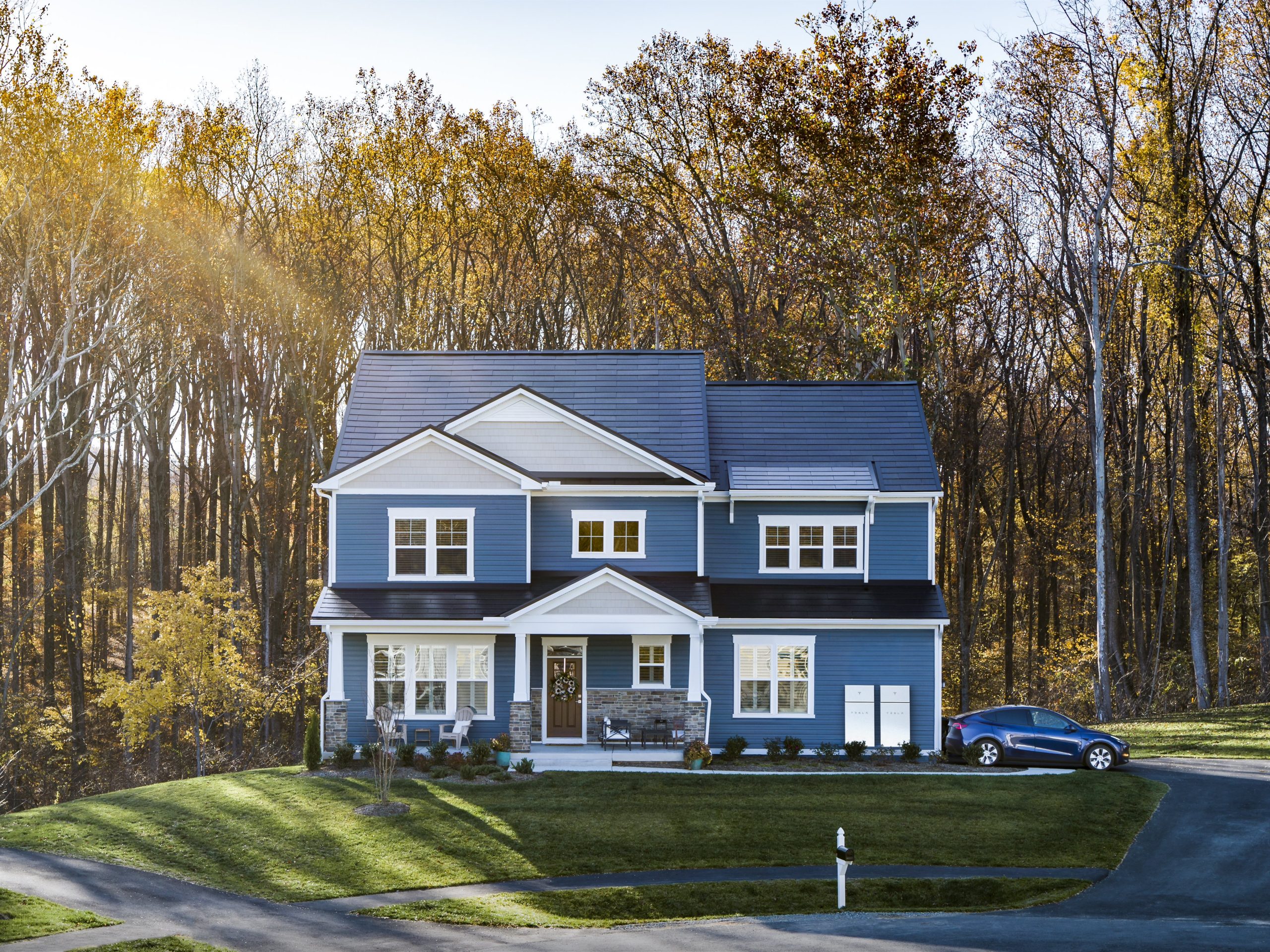

Energy
New Tesla patent points to safer battery packs with damage-isolating energy system
Details from Tesla’s new patent suggests that the company is coming up with a way to make its battery packs safer. Using what the electric car and energy company describes as an “Energy Storage System,” Tesla would be able to isolate damages caused by failed battery cells, saving functional cells in the battery pack.
The patent, which was published today, listed an international filing date on January 10, 2018. Tesla noted in its patent that battery cells generate heat during both charging and discharging. When cells fail, the individual units typically release hot gases that could negatively affect the integrity of nearby cells. This usually results in functional cells being damaged as well. Tesla’s patent describes the use of two interconnects that would be positioned over the multiple battery cells. Multiple first cell connectors connect the positive terminal of the battery cells to the first interconnect, while multiple second cell connectors connect the negative terminal of the battery cells to the second interconnect. A top plate with an interior and an exterior side is placed over the first and second interconnect. An illustration of this could be found below.

An exploded view of the energy storage system, according to certain embodiments of the invention. [Credit: Tesla]
This top plate includes one or more weak areas above one or more battery cells. These weak areas are designed to rupture when failed battery cells release heat and build up pressure. Tesla’s patent notes that these weak areas could be chemically weaker when exposed to the caustic gases released by failed battery cells. By adopting this system, Tesla would be able to contain the damage from failed cells to a specific section of the battery pack, saving the integrity of functional battery cells. Tesla elaborates on this process in its patent.
“During operation of the energy storage system, the battery cells generate heat. The system may include features or material to thermally insulate the battery cells from the heat generated by other cells (and/or other electrical components), such as a polymer-based insulating material or another type of insulating material. The system may also include features, such as a cold plate or heat pipes, to remove heat generated by the battery cells during operation of the energy storage system. The features or material to perform this electrical insulation may include the interstitial material or a sleeve, as further described below. In alternate embodiments, an air gap may provide the necessary electrical isolation.
“Further, the battery cells may fail and discharge its contents as hot gases that are caustic to the other battery cells and other portions of the system. The energy storage system may include features or material for directing the hot-gas discharge during failure of a battery cell. In certain embodiments, the features or material for insulating the battery cells from heat generated by other battery cells (and/or other electrical components) and the feature or material that directs the discharge of the hot gases during battery cell failure may be the same. In other embodiments, separate features or materials may both insulate a battery cell from the other battery cells and also direct the discharge of any hot gases.”
Tesla’s new patent is yet another sign that the electric car maker is pushing innovation despite the company’s lead in battery technology. Tesla’s 2170 cells, which are fitted on the Model 3’s battery pack, have garnered widespread acclaim from industry experts such as Sandy Munro of Munro & Associates, who dubbed the cells as the best batteries in the world to date. In his conclusion to a thorough teardown and analysis of the Model 3, Munro noted that he was impressed with Tesla’s new 2170 batteries. Munro further stated that after tearing down the electric car, he now believes that Tesla is far above other battery manufacturers such as Samsung and LG in terms of technology.
“This is the new cell. This is called the 2170. It’s a little bit bigger; 20% bigger than the old one. It has new chemistry, and quite frankly, it gives you 50% more power. Twenty percent bigger but 50% more power. I’m pretty happy with that,” Munro said.
Battery packs are at the core of Tesla’s business, with batteries powering both the company’s electric car and energy storage systems. With Tesla ramping its efforts on both fronts, it is imperative for the company to ensure its lead in the battery industry. With safer battery packs, Tesla can continue saturating both the auto and energy market with the added assurance that its batteries are as safe as they can be.
Tesla’s new patent for its Energy Storage System could be accessed in full here.

Energy
Tesla starts hiring efforts for Texas Megafactory
Tesla’s Brookshire site is expected to produce 10,000 Megapacks annually, equal to 40 gigawatt hours of energy storage.

Tesla has officially begun hiring for its new $200 million Megafactory in Brookshire, Texas, a manufacturing hub expected to employ 1,500 people by 2028. The facility, which will build Tesla’s grid-scale Megapack batteries, is part of the company’s growing energy storage footprint.
Tesla’s hiring efforts for the Texas Megafactory are hinted at by the job openings currently active on the company’s Careers website.
Tesla’s Texas Megafactory
Tesla’s Brookshire site is expected to produce 10,000 Megapacks annually, equal to 40 gigawatt hours of energy storage, similar to the Lathrop Megafactory in California. Tesla’s Careers website currently lists over 30 job openings for the site, from engineers, welders, and project managers. Each of the openings is listed for Brookshire, Texas.
The company has leased two buildings in Empire West Business Park, with over $194 million in combined property and equipment investment. Tesla’s agreement with Waller County includes a 60% property tax abatement, contingent on meeting employment benchmarks: 375 jobs by 2026, 750 by 2027, and 1,500 by 2028, as noted in a report from the Houston Business Journal. Tesla is required to employ at least 1,500 workers in the facility through the rest of the 10-year abatement period.
Tesla’s clean energy boom
City officials have stated that Tesla’s arrival marks a turning point for the Texas city, as it highlights a shift from logistics to advanced clean energy manufacturing. Ramiro Bautista from Brookshire’s economic development office, highlighted this in a comment to the Journal.
“(Tesla) has great-paying jobs. Not just that, but the advanced manufacturing (and) clean energy is coming to the area,” he said. “So it’s not just your normal logistics manufacturing. This is advanced manufacturing coming to this area, and this brings a different type of job and investment into the local economy.”
Energy
Tesla and Samsung SDI in talks over new US battery storage deal: report
The update was related by industry sources and initially reported by South Korean news outlets.

Recent reports have suggested that Tesla and Samsung SDI are in talks over a potential partnership to supply batteries for large-scale energy storage systems (ESS).
The update was related by industry sources and initially reported by South Korean news outlets.
ESS batteries to be built at Samsung’s Indiana plant
As noted in a report from Korea JoongAng Daily, the demand for energy storage systems has been growing rapidly in North America, thanks in no small part to the surge in AI investments across numerous companies. With this in mind, Tesla has reportedly approached Samsung SDI about a potential battery supply deal.
The deal is reportedly worth over 3 trillion Korean won (approximately $2.11 billion) and will span three years, according to The Korea Global Economic Daily. A battery supply deal with Samsung SDI could make sense for Tesla as the company already has a grid-scale battery, the Megapack, which is perfect for industrial use. Samsung SDI could simply supply cells for the EV maker.
Production of the batteries would reportedly take place at Samsung SDI’s joint venture factory with Stellantis in Indiana, which is currently under construction. Samsung SDI recently announced plans to use part of that plant’s EV lines to produce cells for ESS, with a targeted capacity of 30 GWh by the end of next year.
Tesla and Samsung’s partnership
At present, only a handful of manufacturers, including Korea’s LG Energy Solution, Samsung SDI, SK On, and Japan’s Panasonic, are capable of producing energy storage-scale batteries domestically in the United States. A Samsung SDI official issued a comment about the matter, stating, “Nothing has been finalized regarding cooperation with Tesla.”
The possible energy storage system deal adds another layer to Tesla’s growing collaboration with Samsung, which is already in line as a partner in the upcoming production of Tesla’s AI5 and AI6 chips. Early sample manufacturing of the AI6 is expected to begin in South Korea, with mass production slated for Samsung’s Texas-based Taylor foundry when it starts operations.
The AI6 chip will power Tesla’s next wave of high-volume projects, including the Optimus humanoid robot and the autonomous Cybercab service. Musk has called the partnership with Samsung a “real collaboration,” adding that he personally plans to “walk the line” at the Taylor facility to speed up progress.
Energy
Tesla VP hints at Solar Roof comeback with Giga New York push
The comments hint at possible renewed life for the Solar Roof program, which has seen years of slow growth since its 2016 unveiling.

Tesla’s long-awaited and way underrated Solar Roof may finally be getting its moment. During the company’s Q3 2025 earnings call, Vice President of Energy Engineering Michael Snyder revealed that production of a new residential solar panel has started at Tesla’s Buffalo, New York facility, with shipments to customers beginning in the first quarter of 2026.
The comments hint at possible renewed life for the Solar Roof program, which has seen years of slow growth since its 2016 unveiling.
Tesla Energy’s strong demand
Responding to an investor question about Tesla’s energy backlog, Snyder said demand for Megapack and Powerwall continues to be “really strong” into next year. He also noted positive customer feedback for the company’s new Megablock product, which is expected to start shipping from Houston in 2026.
“We’re seeing remarkable growth in the demand for AI and data center applications as hyperscalers and utilities have seen the versatility of the Megapack product. It increases reliability and relieves grid constraints,” he said.
Snyder also highlighted a “surge in residential solar demand in the US,” attributing the spike to recent policy changes that incentivize home installations. Tesla expects this trend to continue into 2026, helped by the rollout of a new solar lease product that makes adoption more affordable for homeowners.
Possible Solar Roof revival?
Perhaps the most intriguing part of Snyder’s remarks, however, was Tesla’s move to begin production of its “residential solar panel” in Buffalo, New York. He described the new panels as having “industry-leading aesthetics” and shape performance, language Tesla has used to market its Solar Roof tiles in the past.
“We also began production of our Tesla residential solar panel in our Buffalo factory, and we will be shipping that to customers starting Q1. The panel has industry-leading aesthetics and shape performance and demonstrates our continued commitment to US manufacturing,” Snyder said during the Q3 2025 earnings call.
Snyder did not explicitly name the product, though his reference to aesthetics has fueled speculation that Tesla may finally be preparing a large-scale and serious rollout of its Solar Roof line.
Originally unveiled in 2016, the Solar Roof was intended to transform rooftops into clean energy generators without compromising on design. However, despite early enthusiasm, production and installation volumes have remained limited for years. In 2023, a report from Wood Mackenzie claimed that there were only 3,000 operational Solar Roof installations across the United States at the time, far below forecasts. In response, the official Tesla Energy account on X stated that the report was “incorrect by a large margin.”









